9 Best Japanese Noodles For Hibachi And Teppanyaki Grilling
As you may already have guessed, “hibachi noodles” is a general term. But while the ingredients may vary in recipes, the cooking method is the same, and they all go through the hibachi before they’re served.
But the best type of noodle is a wheat flour noodle. There are many kinds, but I’ll explain why yakisoba noodles are the best for hibachi, and I’ll get into 8 more types of noodles you can try out or substitute when you have those on hand.
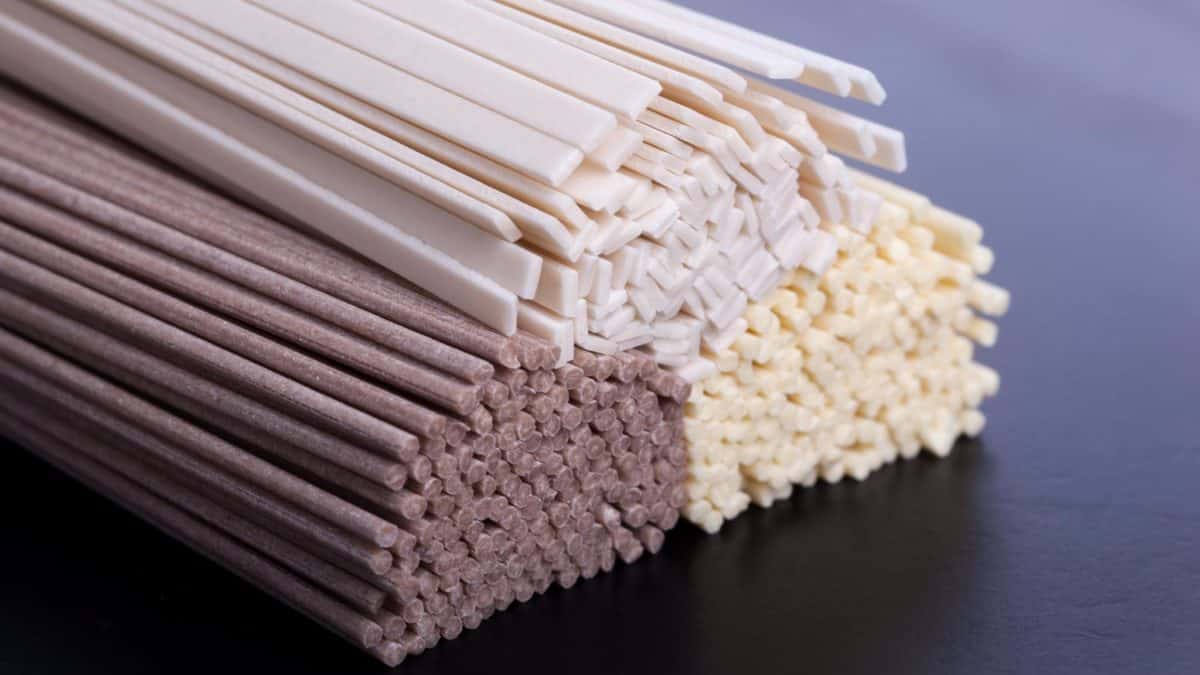
Although you can use soba noodles for hibachi, they are buckwheat noodles, while the typical noodle used is made of wheat flour. Yakisoba is made with wheat ramen-style or “chukamen” noodles and are perfect for hibachi.
My favorite brand to use is Hime, which is great for not only ramen soup but teppanyaki hibachi grilling as well. They lend themselves to being coated in a bit of oil and fried well, so if you have some left or are planning to buy some, those are great.
The other perfect option would be udon noodles, a thicker noodle with a more robust flavor that will get you a more noodle-heavy dish.
| Noodle for hibachi | Images |
|---|---|
| Best chukamen noodles for hibachi: Hime | 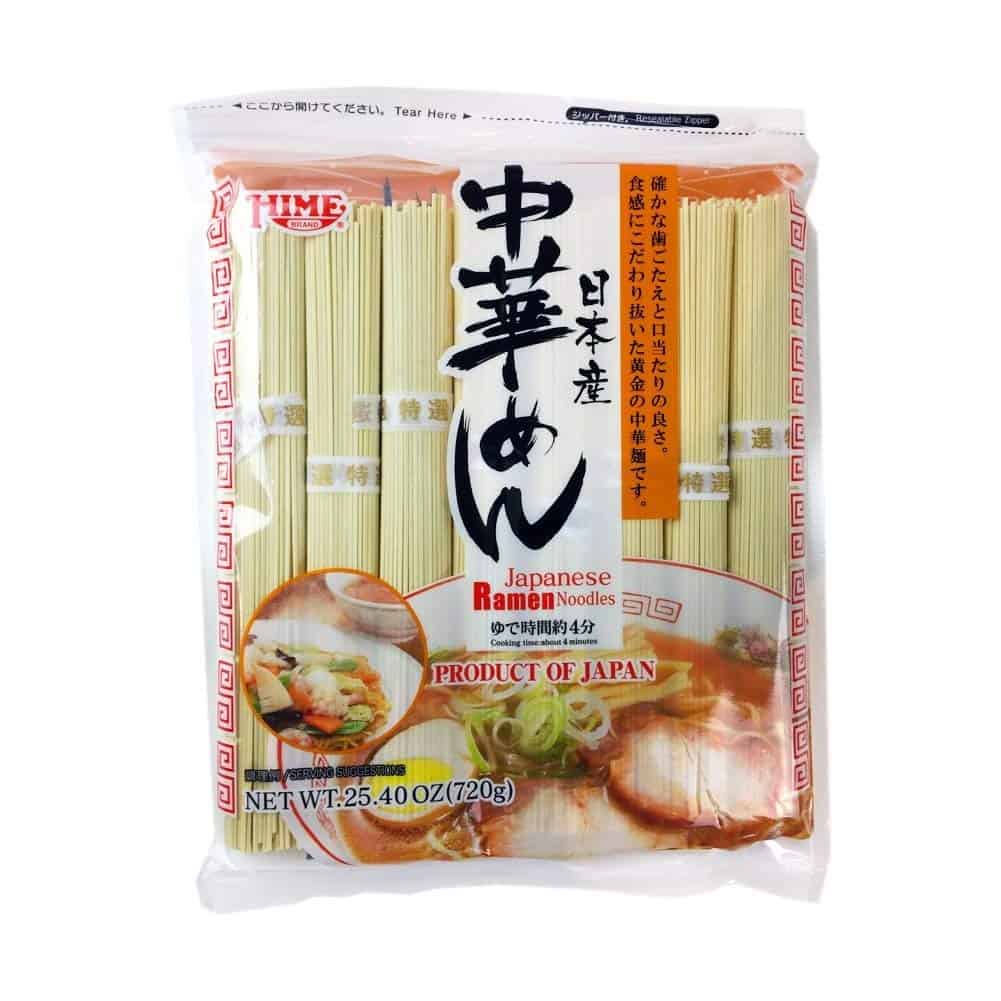 (view more images) |
| Best udon noodles for hibachi: Hakubaku |  (view more images) |

Check out our new cookbook
Bitemybun's family recipes with complete meal planner and recipe guide.
Try it out for free with Kindle Unlimited:
Read for freeIn this post we'll cover:
Best noodles for hibachi
Chukamen ramen (yakisoba) noodles
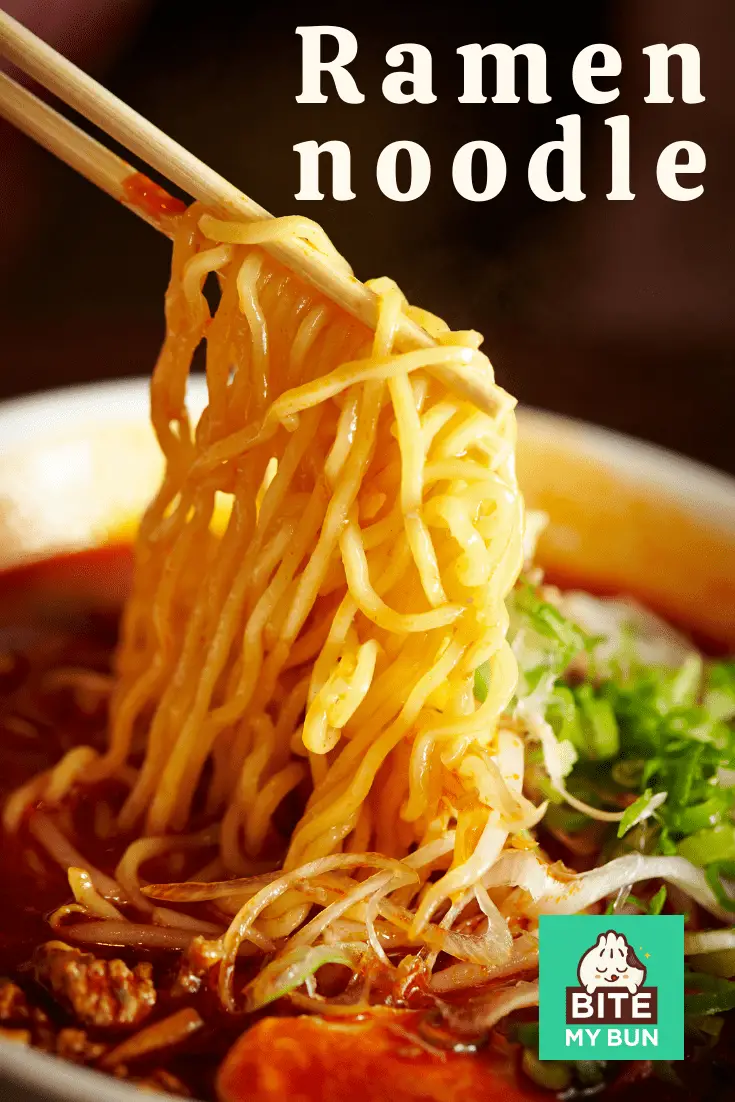
Made from wheat-based flour, kansui, and saltwater, ramen is usually thin and pale yellow in color and has a firm and elastic texture.
The technique to make ramen noodles was imported from China during the Meiji era (1868 – 1912) and one distinct feature of ramen is that before the dough is rolled, pulled, and stretched, it’s first risen with yeast.
The noodles may vary in shape, width, and length, and are usually served in a broth. Curry, tonkotsu, miso, shio, and shōyu are examples of ramen noodles.
Udon
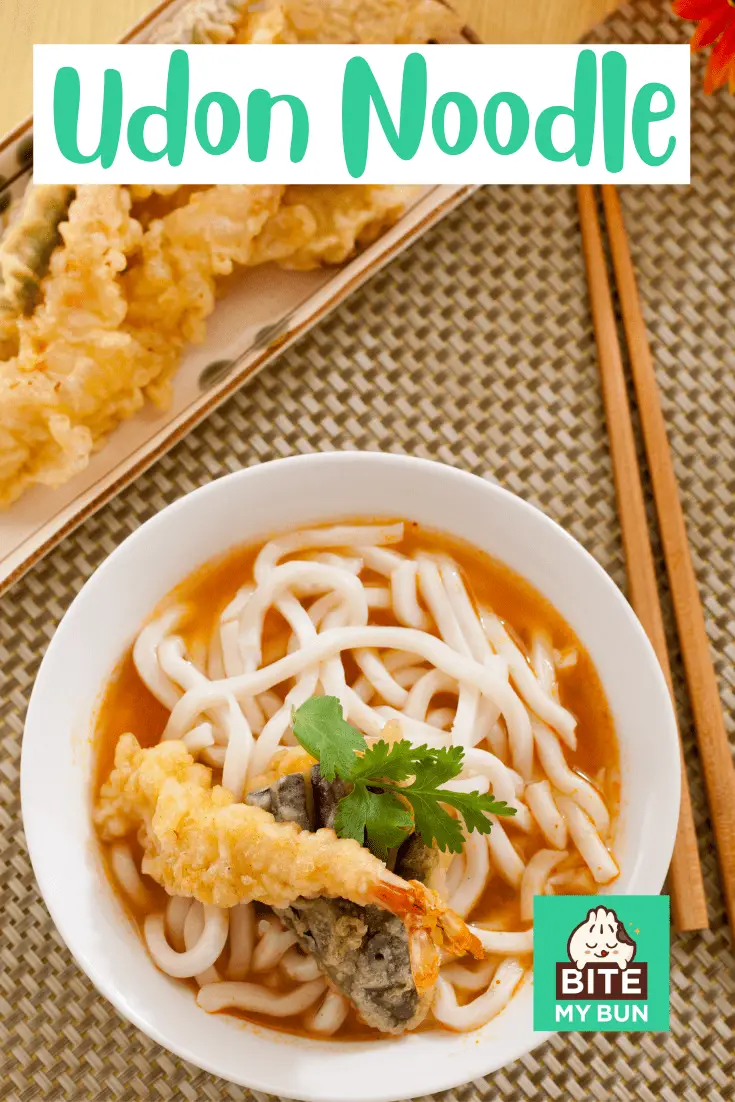
The thickest Japanese noodles you’ll find is udon. They’re bright white strands of wheat-based noodles and can be as thick as 4 to 6mm.
You can eat udon in one of 2 ways, and as with many Japanese dishes, it’s a very seasonal food:
- Eat them cold with a nice sauce to dip them in and slurp them up. They’re eaten cold in the summer.
- Eat them in warm recipes and soups, which you’ll want to do in winter and fall months when it’s much colder outside.
You’ll find udon in dishes like:
- Kitsune udon
- Yaki udon
- Nabeyaki udon
- Curry udon
You might think that every dish with “udon” in its name would have these same noodles in the recipe, but there’s one anomaly with Sara udon, which is made using a crispy noodle.
Shirataki
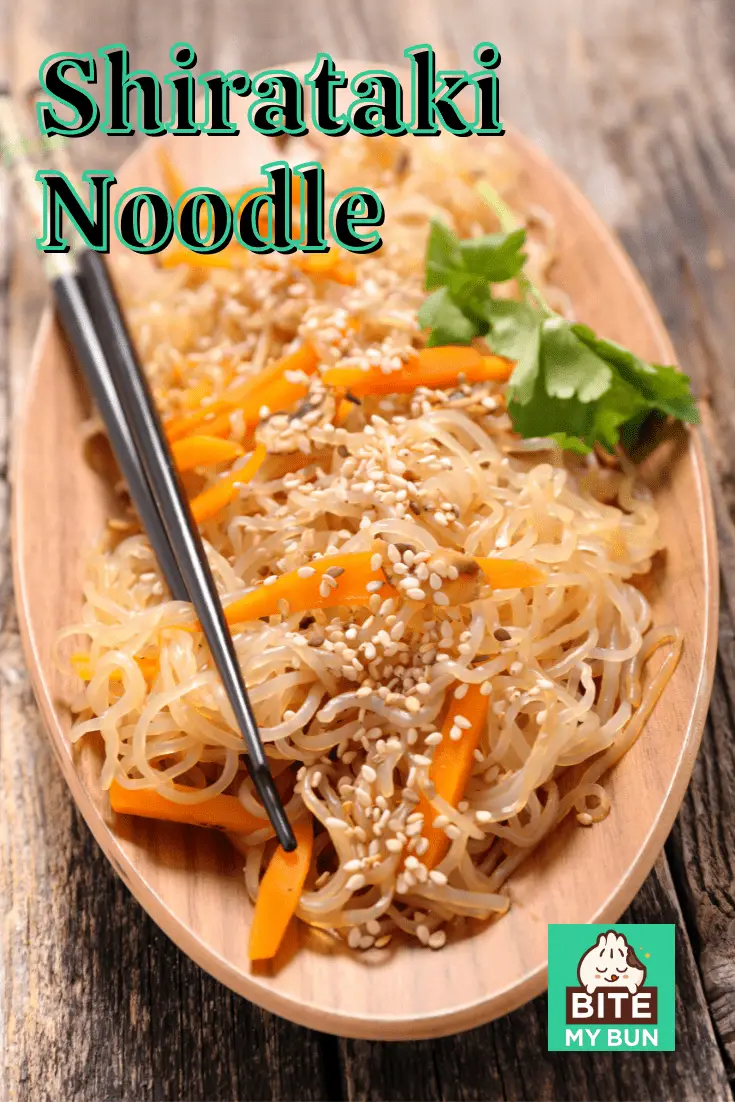
This type of noodle is transparent and has a rubbery texture to it. It’s made from konnyaku and is chewy when you eat it. Shirataki goes well with Japanese cuisines like oden and sukiyaki.
Soba
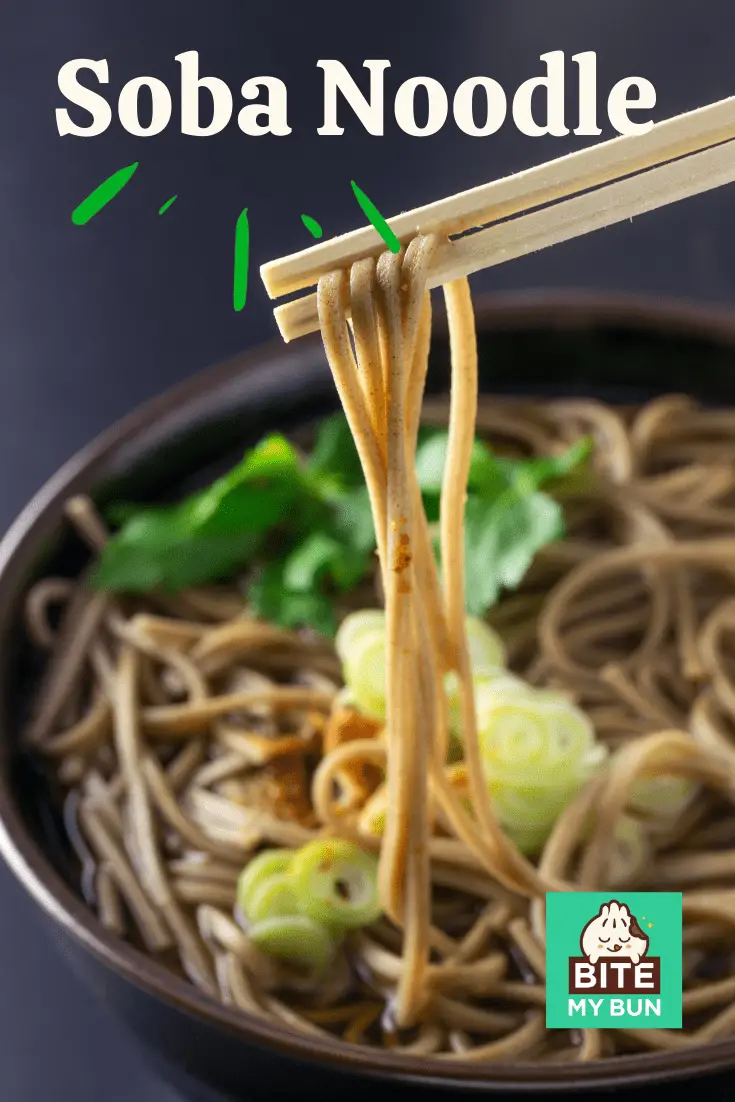
This noodle is made from wheat flour and buckwheat, and usually has a pale yellow or beige color. Soba noodles are available dried or fresh and they come with a versatile serving method that can either be hot (as a noodle with broth) or cold with dipping sauce.
If you’ve ever tried tororo, kitsune, tempura, kake, or chilled zaru soba, then you’ve sampled some Japanese soba noodles!
One soba dish that shouldn’t belong to this category is yakisoba noodles because it’s actually made with Chinese-style noodles (chūkamen) and is not entirely a “soba.”
Somen
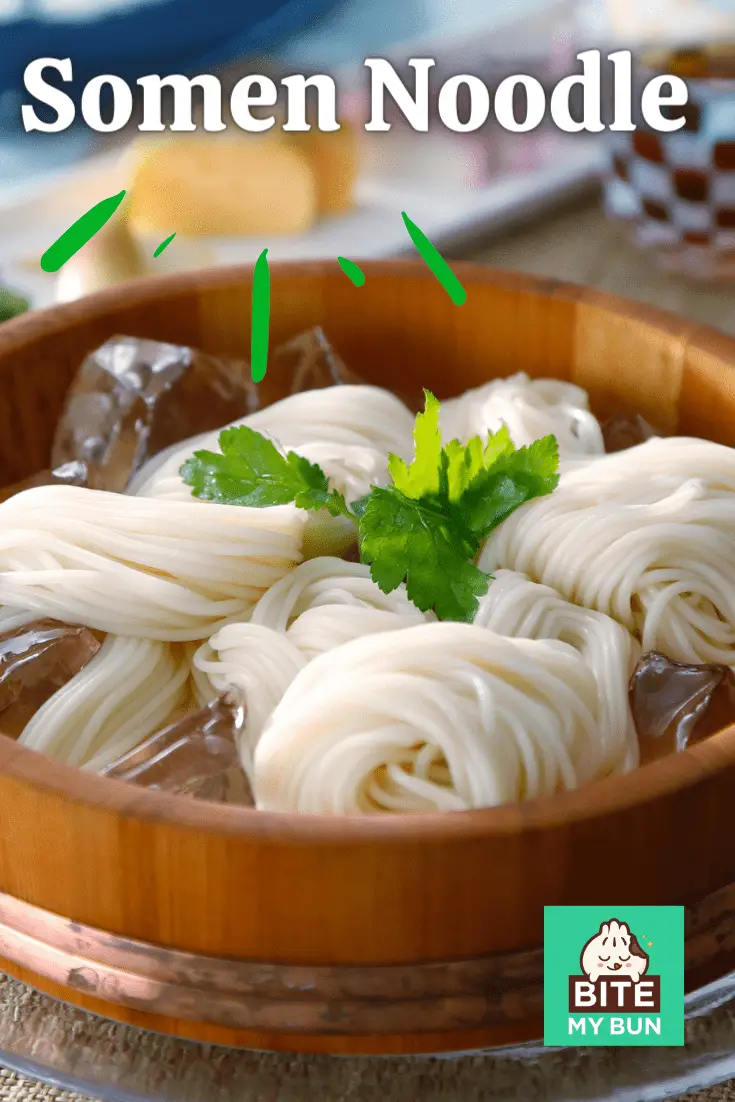
Somen is another wheat-based noodle. But instead of the usual thick and pale yellow form, this one is thick and white in color.
Although it can be used in soups and other hot dishes, it’s usually served cold or chilled. It’s especially done in the summer months to help the Japanese remain cool.
Somen noodles are very similar to hiyamugi and udon noodles, except they’re very thin at 1.3 mm in width, whereas other noodles are slightly thicker. When somen noodles are made, an important ingredient to success is oil.
Hiyamugi
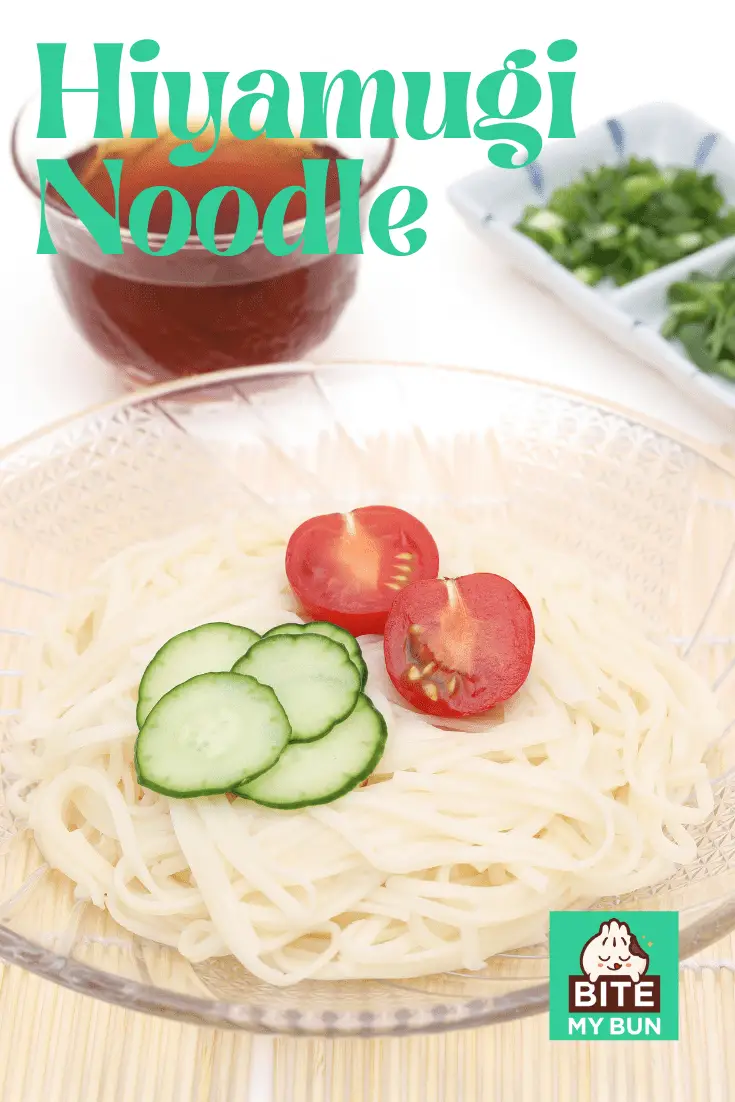
Hiyamugi is also made from wheat and is similar to udon and somen noodles. Its thickness is roughly between the two noodles mentioned previously and is also served very much like udon and somen noodles.
You’ll often see hiyamugi noodle strands as white, but there some cases where they’re bundled with brown or pinkish hued strands.
Harusame
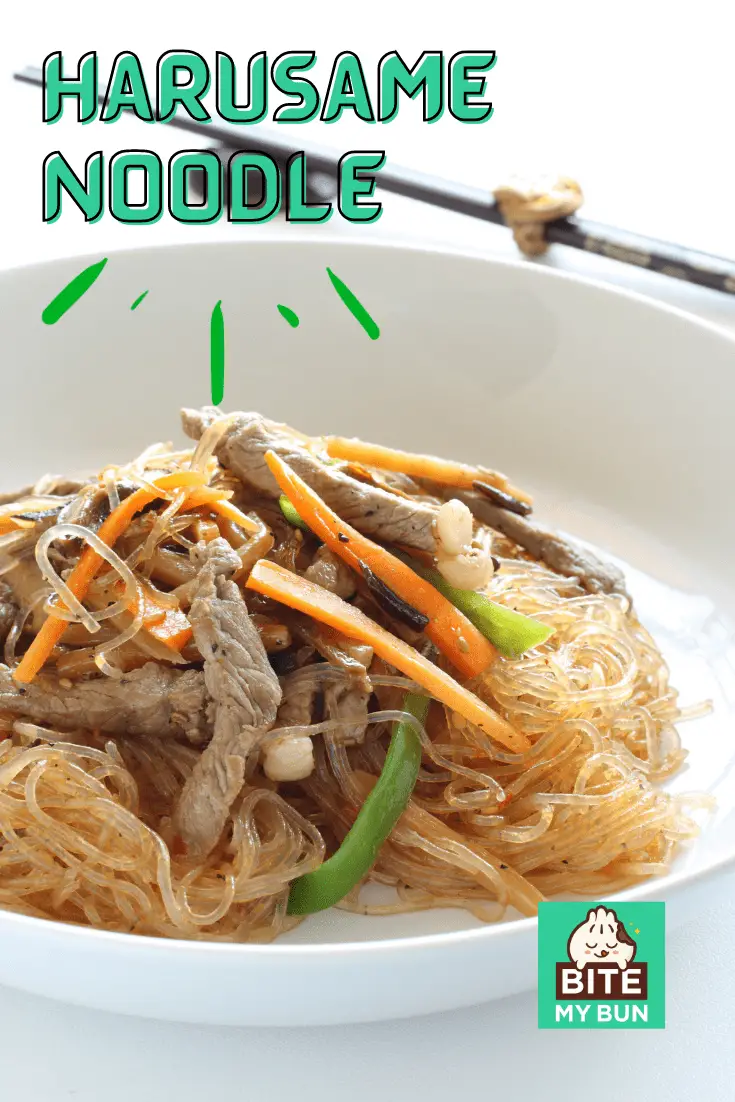
Harusame is quite a bit different and is a type of glass noodle. They’re the only known noodle that’s made using potato starch.
Tokoroten
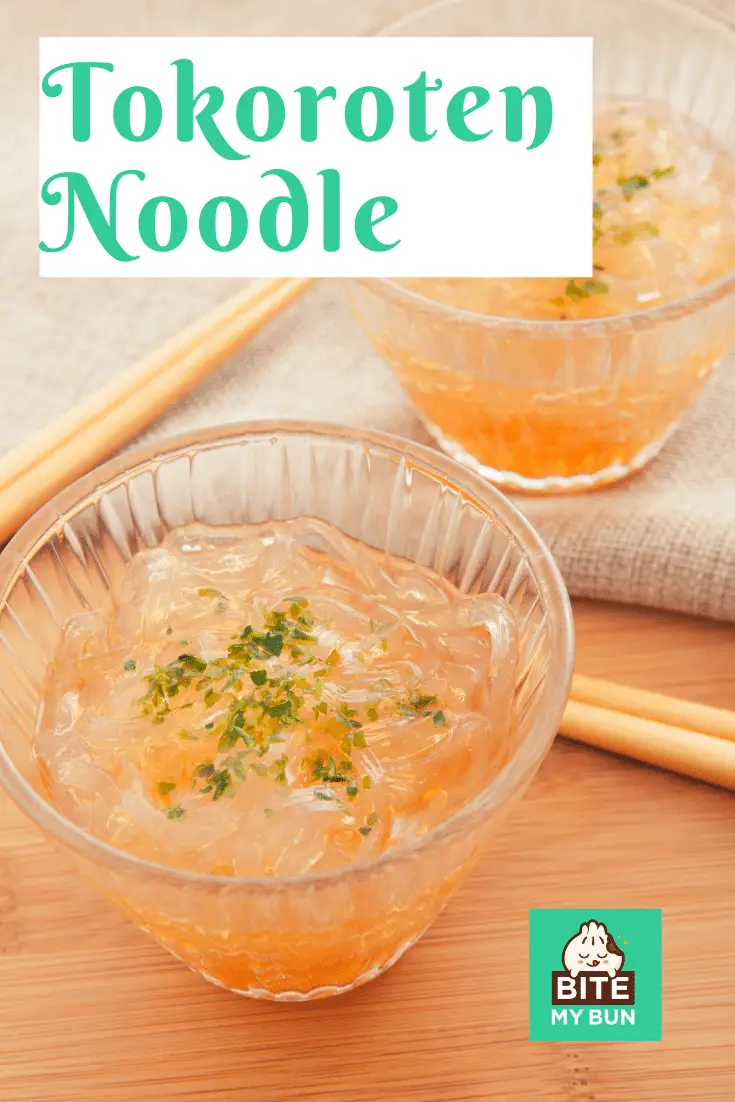
This Japanese noodle is the strangest of all noodles, but I kind of like it because of that! It’s made out of a type of agar and has a gelatin-like substance.
It’s actually not agar but another kind of red seaweed that’s specifically grown for making these noodles! You can read more in this post I’ve written about tokoroten.
Even the way the noodle is cut is also weird, as it has the shape of thin rectangular jelly-like slices.
Asian noodles are easy to cook
Versatility is one of the best and most unique advantages of Asian noodles.
It can be cooked in many ways and paired with meat, poultry, fish, vegetables, fruits, side dishes, and condiments in whatever way the recipe prefers it to be.
You could even come up with your own noodle recipe if you’re clever enough!
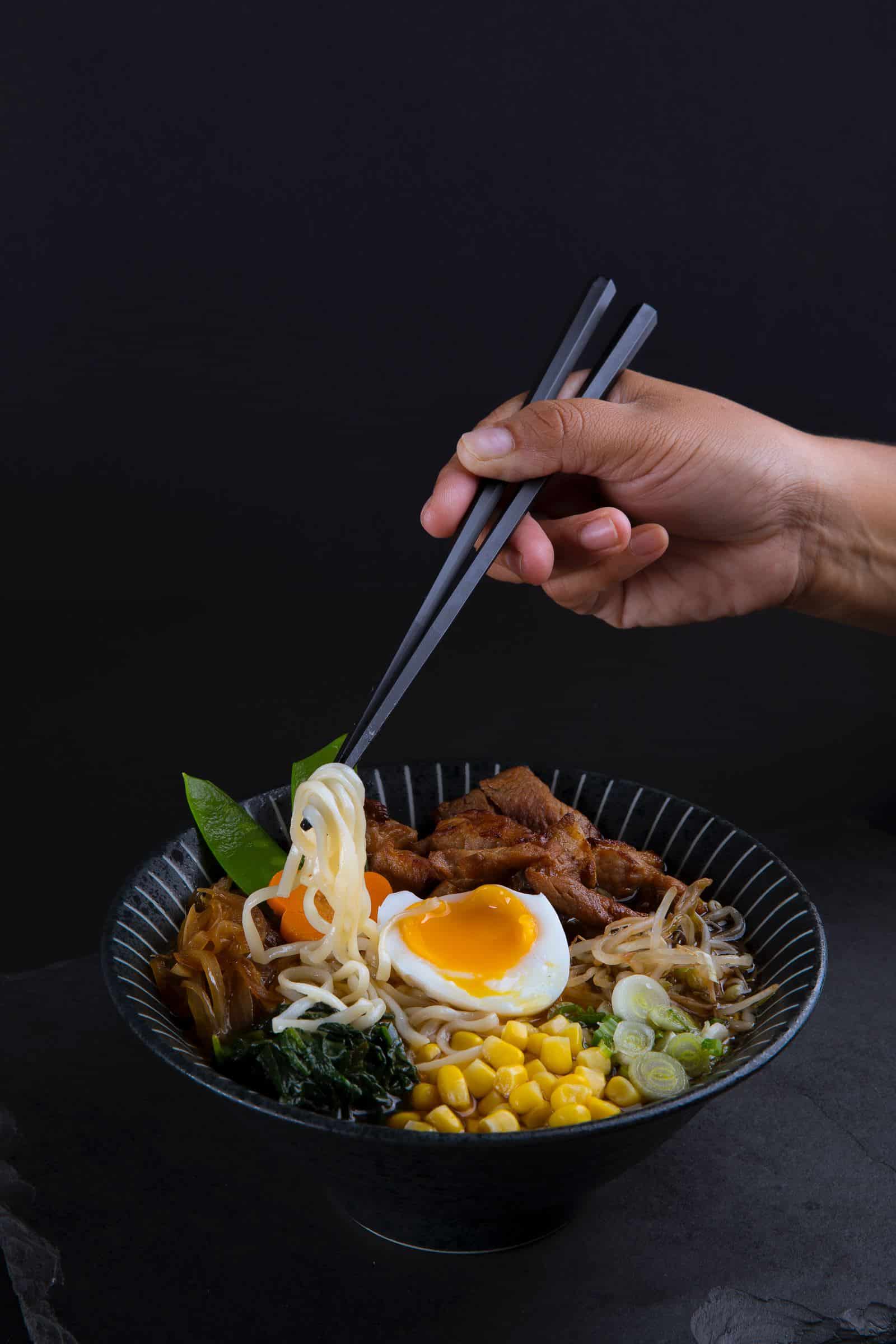
What’s the difference between hibachi noodles and lo mein?
There’s actually almost no difference between hibachi noodles and lo mein, except that the latter comes from China and the former is made in Japan.
The Japanese also have 8 different kinds of noodles, and are so named based on the raw materials that they come from.
While in China, noodle names are more or less conventional because they’re made from wheat and are either mixed with eggs or just plain wheat flour.
As stated above, there’s actually no such thing as hibachi noodles and they’re only called that way because they’re cooked on the hibachi.
Are hibachi noodles healthy?
Hibachi noodles can be healthy if you cook them right. Homemade noodles are better since you can control the salt and oil that go into your dish, as well as the ingredients.
If you stick to healthier proteins like chicken, hibachi noodles can be healthy!
Enjoy hibachi noodles fresh from the grill
If you’ve wanted to try a new type of noodle, hibachi noodles are a great place to start. Considering how versatile they are, hibachi noodles are sure to keep your taste buds busy!
Also read: this is the best hibachi teppanyaki steak noodles recipe out there!
Check out our new cookbook
Bitemybun's family recipes with complete meal planner and recipe guide.
Try it out for free with Kindle Unlimited:
Read for freeJoost Nusselder, the founder of Bite My Bun is a content marketer, dad and loves trying out new food with Japanese food at the heart of his passion, and together with his team he's been creating in-depth blog articles since 2016 to help loyal readers with recipes and cooking tips.
